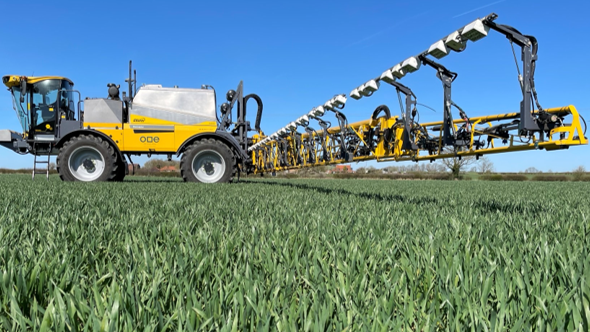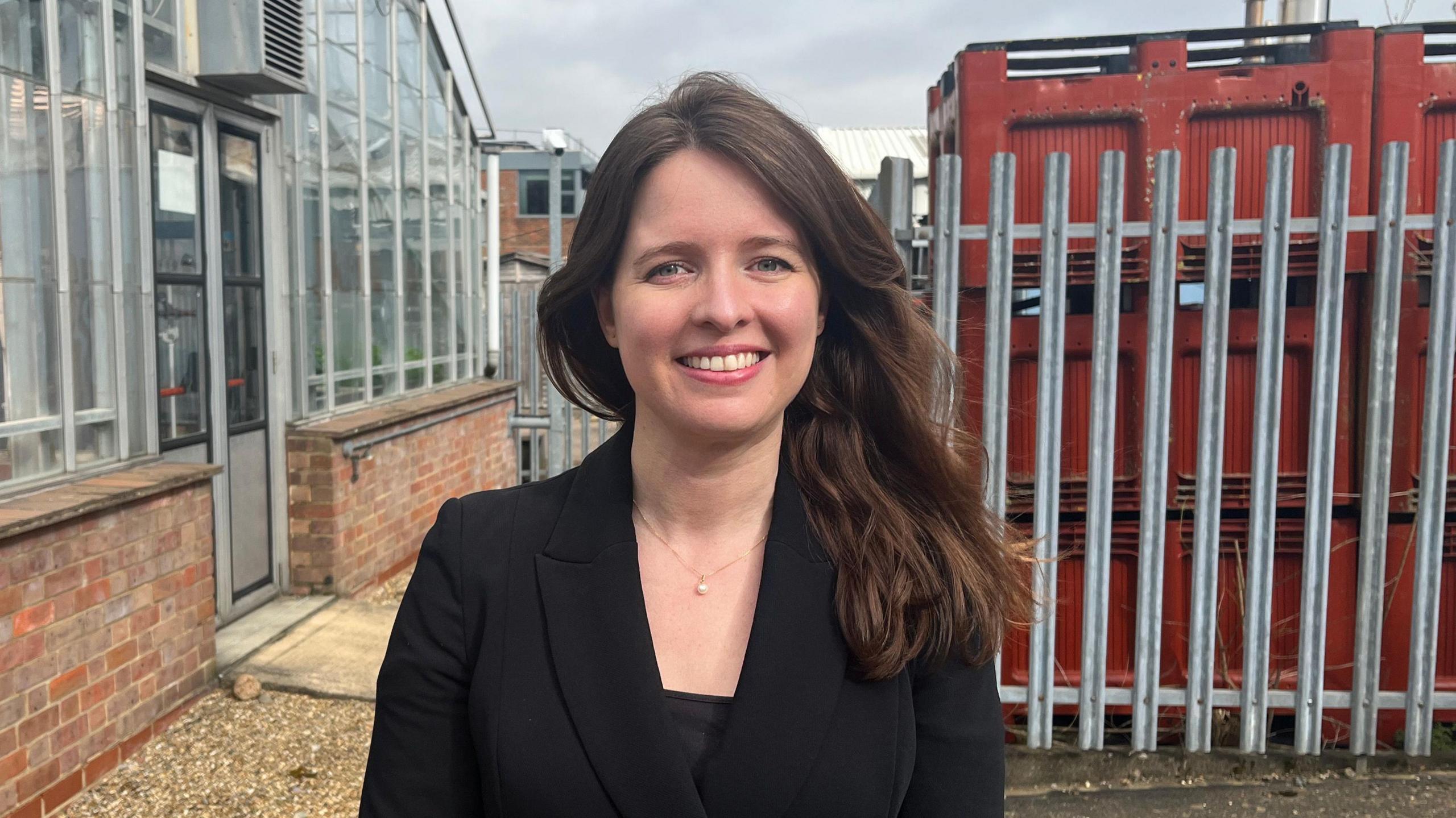AI used to spot weeds growing in farmers' fields

A crop prayer with cameras attached is used to detect the weed black-grass at a range of stages of growth
- Published
A research centre has been trialling using artificial intelligence (AI) to spot weeds in farmers' fields using cameras fitted to crop sprayers.
Rothamsted Research, based in Harpenden, Hertfordshire, said the cameras could detect the weed black-grass at a range of growth stages using AI.
The system then ensures the correct amount of herbicide is sprayed onto that area of the field.
Dr David Comont, an evolutionary ecologist at Rothamsted Research, said the project has brought "the knowledge we have acquired over many years of studying the black-grass problem" and combined it with state-of the art technology.
"By targeting herbicides only where they are needed, we can both reduce the amount of herbicide being used and the cost to the grower, while still maintaining control of this weed," he added.

Dr David Comont said that black-grass was a "particularly troublesome weed" for farmers
Rothamsted Research helped to train the Bosch, external cameras to spot black-grass by photographing both the crop and weed plants from a fixed height.
An AI algorithm was then trained to apply this knowledge to images that came from cameras being driven over real fields across a whole farm, the research group said.
The camera asks the sprayer to target an area where it can see black-grass is growing so the technique is in effect map-based rather than targeting individual plants.
Experiments with a sprayer using different numbers of cameras and boom heights resulted in a working set up of 28 cameras set at a height of 1.1m (3.2ft).
The three-year project involved taking thousands of images in the field and mapping the black-grass infestation across more than 100 hectares (247 acres).
Muhammad Kassem, a data scientist at Bosch, said: "Overall we've scanned around 5,000 images and they cover a variety of different seasons and where black-grass is growing amongst different crops, not only wheat but also barley and beans.
"Each time the sprayer ran through the field we had so many images that it took a couple of days to download them all.
"Then we used coding to clean these up and then to train the AI. We've come out of it with really good accuracy of around 85%," he said.
Funding for the project came from the Department for Food, Agriculture and Rural Affair's Farming Innovation Programme, external and the UK Research and Innovation's Transforming Food Production challenge, external.
Get in touch
Do you have a story suggestion for Beds, Herts & Bucks?
Follow Beds, Herts and Bucks news on BBC Sounds, Facebook, external, Instagram, external and X, external.
Related topics
- Published31 March
